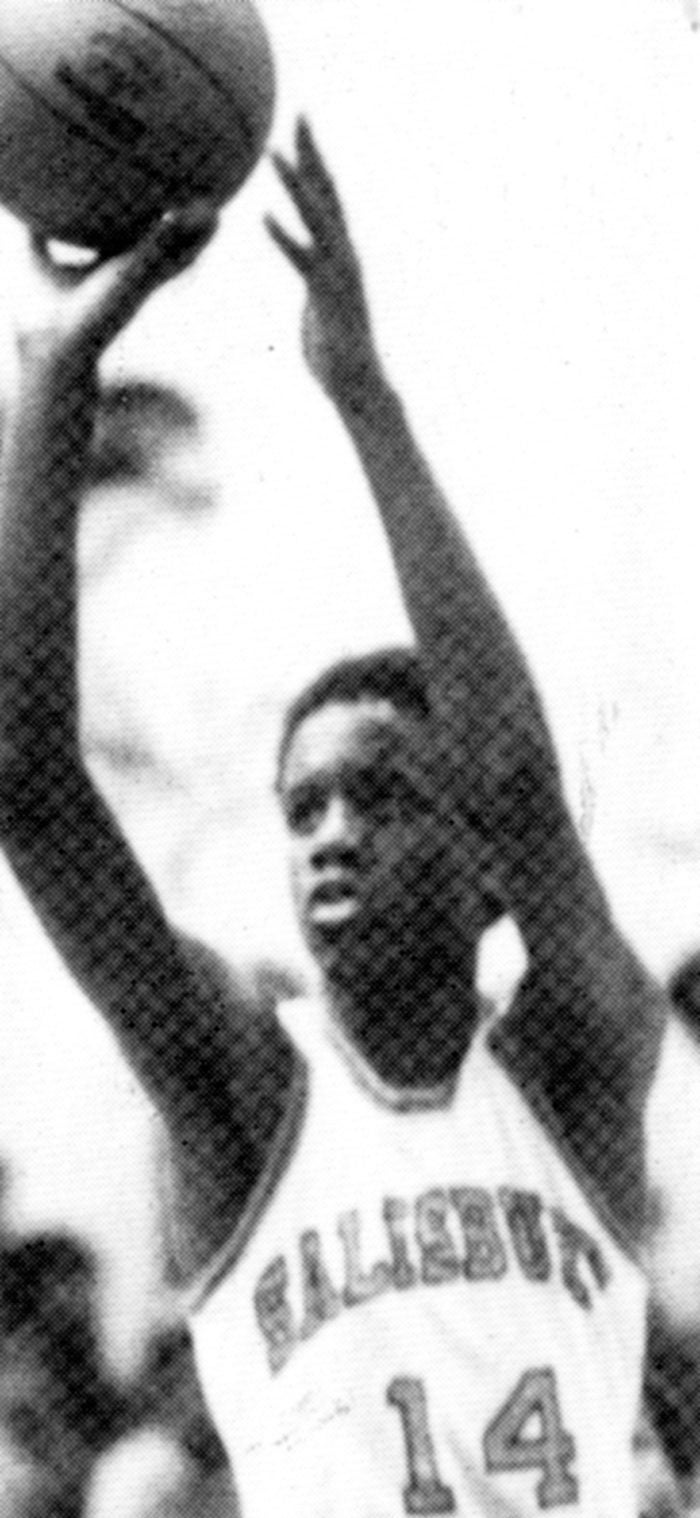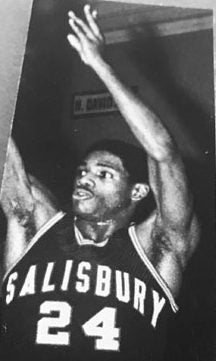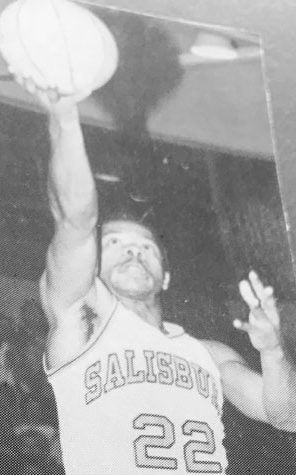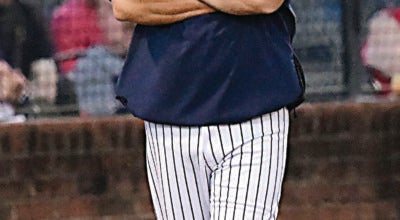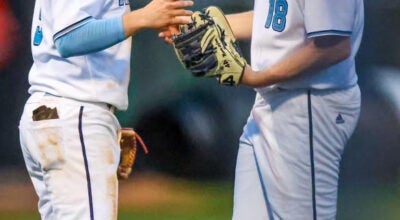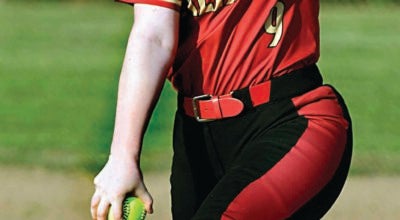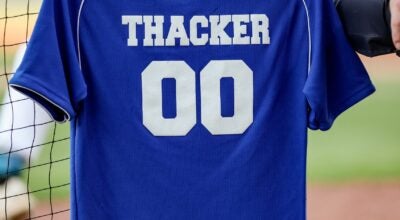High school basketball: Salisbury Hornets took on James Worthy four times
Published 12:00 am Sunday, October 4, 2020
By Mike London
mike.london@salisburypost.com
SALISBURY — Doug Campbell Sr. says the guys at work scoff when he tells them he played against James Worthy back in the day.
But it’s a true story.
Campbell, an All-Rowan County guard in 1978-79, and his Salisbury teammates faced high school superstar Worthy four times in a two-season span when Worthy was regarded as the state’s top high school player and one of the elite prospects in the country.
“It was an awesome experience,” Campbell said. “Worthy wasn’t overrated. He really was all that. Everyone knew. This was a guy we knew we were going to be watching in the pros.”
The match-ups with Worthy came late in Hall of Famer Bob Pharr’s coaching era, when the Hornets were no longer invincible, but they were still very good. They still could slow down any opponent, no matter how tall and talented, with their tenacious 1-3-1 zone.
“People always ask why our scores were so low and why guys didn’t average more points, but in those days, we played defense,” Campbell said. “At practice, we might work on offense for 35 or 4o minutes, but the rest of practice was defense. We worked on defensive slides constantly. We were in great shape. I was the back guy on our 1-3-1, running corner to corner. I was 6-foot-3 and I was a good rebounding guard. Coach Pharr was a really good coach, and if you wanted to play, you did whatever he said.”
Campbell also was a solid shooter. He was the guy Pharr would trust to shoot technical foul shots.
Not surprisingly, the Hornets went 0-for-4 against Worthy and his Ashbrook Green Wave teammates — 0-for-2 at home and 0-for-2 in Gastonia.
“Ashbrook had more than Worthy,” Campbell said. “They had a lot of size. I don’t remember the names, but they had other good players.”
Still, the last of those four meetings, which occurred on Wednesday, Jan. 24, 1979, in Gastonia got really interesting. Worthy, who was named one of the NBA’s 50 all-time greatest players a few years ago, had to turn it on to pull that one out.
In the first of the four contests with Ashbrook, in mid-December 1977, the Hornets were on the road.
Worthy, a junior that season, was already a marquee attraction, a preseason second team All-America by Street & Smith and considered one of the top two juniors in the entire county.
He possessed unusual quickness as well as height and scouts rated on him on the same level as North Carolina natives David Thompson, Bob McAdoo and Phil Ford. At least one ACC coach offered the opinion that Worthy would be the best player the state ever had produced.
As a sophomore, Worthy had averaged 17.8 points, 9.8 rebounds and 6.0 blocks and had been conference player of the year for a 26-1 team. He’d led Ashbrook to the 4A state championship game where the Green Wave had fallen, 60-59, to crosstown rival Hunter Huss and Huss’ star guard Eric “Sleepy” Floyd. Ashbrook had beaten Huss four times that season, but Huss won the fifth meeting, and that was the one that counted most.
Salisbury stayed level with Ashbrook for one low-scoring quarter thanks to 6-foot-2 Terry Johnson, who scored 12 of his 13 points in the first half.
“Terry’s best shot was a half hook,” Campbell remembers.
By halftime, the Hornets were down 21-13, and the Green Wave stormed away in the second half, leading by as many as 20, before winning, 46-34. Ricky Holt had eight points and five rebounds for the Hornets. Salisbury held the 6-foot-9 Worthy to modest totals of 14 points and seven rebounds, but he sat down pretty early. Coach Larry Rhodes (Ashbrook’s gym is named for Rhodes now) wanted to rest Worthy for the next night’s highly hyped game against a DeMatha team ranked No. 1 in the nation.
Salisbury had shot just 37 percent and was convinced that if it could shoot better — and keep Ashbrook off the foul line — it could win the rematch in the Salisbury gym.
On Jan. 24, the teams clashed again, a non-conference affair to break up Salisbury’s long grind of 3A North Piedmont Conference games.
“It seemed like everyone in Rowan County came to see it,” Campbell said. “The refs had to push the crowd back so guys could throw the ball in from out of bounds.”
Worthy dunked early as the Green Wave went up 11-4. Salisbury made an attempt to rally in the second quarter, but another Worthy dunk helped Ashbrook break it open. It was 28-12 by halftime. Salisbury finished strong, but could only close the final margin to a respectable 50-36. Johnson again led the Hornets, this time with 14.
“They were just too big for us,” Campbell said. “We had Woody (Boler), but he was still learning. He was just a sophomore then.”
The battles with 4A Ashbrook helped the Hornets get tougher. They finished tied for second in the NPC with an 11-5 record, but they won a rugged NPC tournament, beating Lexington in two overtimes and taking Thomasville by one point. Boler, the team’s tallest player at 6-foot-5 (and still growing), was starting to come on.
After taking the NPC tournament, the Hornets won the District 5 tournament to gain a berth in the eight-team 3A state tournament being held in Durham on March 8-11. The Hornets had to battle back from 15 down in the second half to top Thomasville for that district championship.
Salisbury had a chance to see more high school superstars in the state tournament, as future NBA great Dominique Wilkins and future Wake Forest star Alvis Rogers led the Washington Pam Pack to the championship.
“We didn’t play against Wilkins, but we did get to see him,” Campbell said. “We were coming out of the locker room when their game was starting. They ran a play for Dominique off the opening tip. He does a double pump and then dunks it backwards. I’d never seen anything like that in a high school game. So, yeah, we knew. That was another guy who was going to make it in the pros.”
Guard Tim Smith scored 20 as Salisbury nipped Western Harnett in the first round of the state tournament. Boler scored 20, but Salisbury fell by six in the semifinals to Cummings.
Then Cummings was wiped out by Washington in the championship game.
As a high school senior, Worthy was a first team preseason All-American. As a junior, he’d averaged 19.6 points and 10.5 rebounds for a team that had gone 18-8. Worthy had played in the “Mini Olympics” in Colorado Springs that summer, and a much more seasoned Ashbrook squad was expected to be the state’s best 4A team.
Salisbury clashed with Ashbrook early, when Ashbrook was 4-0 and ranked No. 1 in 4A. Salisbury had graduated Johnson and Smith, but was off to a 4-1 start with players such as Boler, Campbell, Tim Rice, Marcus Stalling, Kevin Auten, Tim Leach and Clinton Little. Salisbury’s only loss at that point was to North Rowan in overtime. The Hornets were ranked 10th in 3A.
Fans got energized when the Salisbury girls team, led by Gerri Spain, won an exciting overtime game against Ashbrook.
But the Hornet boys couldn’t keep that electricity going. They experienced a dismal shooting night, 25 percent from the field and nine misses on 11 free-throw attempts.
They managed to stay in the game most of the way with defense — 20-12 at halftime and 30-21 after three quarters. But the Hornets watched Ashbrook pull away when they had to abandon the 1-3-1 zone and try to match up. The final was 50-30.
Boler scored 10. Auten had nine rebounds. Little made three long jumpers that would’ve been 3-pointers if the 3-point shot had been in effect.
Worthy countered with 20 points and 18 rebounds.
“We did everything we wanted to do — except score,” Pharr told the Post after the game.
Salisbury had an 11-4 record by the time it got another shot at Ashbrook on the road in late January. The only team that had beaten Salisbury besides Ashbrook was North Rowan, but the Cavaliers had stopped the Hornets three times in games played in the 40s.
“We really wanted that game with Ashbrook,” Campbell said. “We wanted to be able to say we beat Worthy’s team. This was our last chance.”
Salisbury took an ugly 43-39 win against West Rowan the night before it traveled to face a rested Ashbrook team, so there was little reason for optimism in the Hornets’ camp.
But the Hornets caught Worthy on a flat night — well, at least a flat first half.
The Hornets led 10-8 after the first quarter and stunned the Ashbrook crowd by maintaining that lead the entire second quarter. Salisbury went to the locker room with a 20-16 edge.
The recruiting circus took place later then, and while Worthy was a senior, he still hadn’t made his decision between UNC and Kentucky. Maybe that was weighing on his mind. He took only six shots in the first half. He had only two rebounds at halftime.
But Worthy played like an All-American in the third quarter and Ashbrook’s full-court press forced turnovers. By the end of the third quarter, Ashbrook had taken command.
“We had four turnovers in a row,” Campbell said. “We let them get the momentum and couldn’t get it back.”
Salisbury stayed in it all the way this time, but Ashbrook prevailed, 44-36.
Campbell earned praise from Pharr after making six of 10 shots and scoring 12 points. Rice did some good work on the boards. Boler and Stalling contributed eight points each.
Worthy finished 11-for-16 for 25 points. He added 10 rebounds, six blocks and five steals.
Worthy was the reason Ashbrook played a game that season against West Charlotte that attracted 10,076 fans to the Charlotte Coliseum.
After the season, Worthy played in the McDonald’s All-American Game, sharing top billing with Wilkins, Isiah Thomas and Ralph Sampson.
Salisbury finished that 1978-79 season with a 21-6 record, taking the NPC regular-season crown with a 14-2 record. Salisbury won 10 straight after that hard-fought loss at Ashbrook, including a 55-40 victory against North Rowan in the NPC tournament championship game.
Campbell believes those late-70s Salisbury clubs he played on are underrated. They don’t get talked about much, as they came between Pharr’s string of WNCHSAA championships at the start of the decade and the powerhouse teams of the 1980s that went 30-2 in back-to-back seasons and won a NCHSAA title.
“We had strong teams that I believe could have played with anyone,” Campbell said. “We had some losses, but how many teams played against an All-American like Worthy?”
Boler would have a tremendous senior season in 1979-80, scoring a career-best 37 against Asheboro and averaging 17.7 points. Little and Eddie Hipps also averaged double figures for the Hornets in what would be Pharr’s final season at the helm. The Hornets went 23-4 that season and won another NPC regular-season championship with a 14-2 record.
Worthy picked UNC over Kentucky. Some fans considered him a consolation prize because UNC had lost the recruit it coveted most when the 7-foot-4 Sampson picked Virginia.
But Worthy would turn out to be a monumental college player.
Boler moved on to James Madison University where he would encounter Worthy again, this time on March 13, 1982, in the Charlotte Coliseum in the second round of the NCAA tournament. James Madison nearly upset the top-ranked Tar Heels. Michael Jordan scored only six points that night, but Worthy had 15 and Carolina survived JMU, 52-50.
That’s the UNC team that went on to win the national championship game against a Georgetown squad led by Patrick Ewing. On a national-championship stage, Worthy and his old rival from Gastonia, “Sleepy” Floyd, again were on opposing teams. Jordan scored 16 and made the shot everyone remembers, but Worthy carried the Tar Heels with 28 points on 13-for-17 shooting. Floyd had 18 points. Worthy won the Most Outstanding Player award and was featured on the cover of Sports Illustrated.
Sampson was expected to be the No. 1 pick when the NBA draft rolled around in June 1982, but he decided to return to Virginia for his senior year. He wanted to take one last shot at the NCAA championship that had proven elusive.
Worthy had his championship, so he did move on to the NBA following his junior season.
The Los Angeles Lakers were the league’s best team, but they held the No. 1 pick through a 1979 trade with the Cleveland Cavaliers, plus a coin-toss victory against the lowly San Diego Clippers. It was the only time in history that the reigning NBA champion got to pick first in the draft. That’s how Worthy joined a team that already had Magic Johnson and Kareem Abdul-Jabbar. The Showtime Lakers would be a force for many years to come.
Worthy had worn No. 52 in high school and college, but “52” already was taken by forward Jamaal Wilkes with the Lakers. So Worthy turned to the No. 42 jersey to honor Jackie Robinson, who had worn the 42. Worthy’s father and grandfather were huge fans of Robinson.
Worthy did his new number proud with the Lakers as a seven-time All-Star and three-time NBA champion. He was MVP of the 1988 finals.
There’s one more interesting note to Worthy’s story.
On May 10, 1987, the Golden State Warriors produced a startling 129-121 playoff victory against Worthy and the Lakers in the Western Conference semifinals.
One man did it. Floyd poured in 51 for the Warriors. In the fourth quarter, Floyd outscored the Lakers’ entire team, 29-19.
But Worthy had the last word. The Lakers won that series and went on to take the NBA title.
Worthy and Floyd have been inducted into the North Carolina Sports Hall of Fame.
As for Campbell and his teammates, there are plenty of memories. They can say they played against one of the best the state has ever seen.


